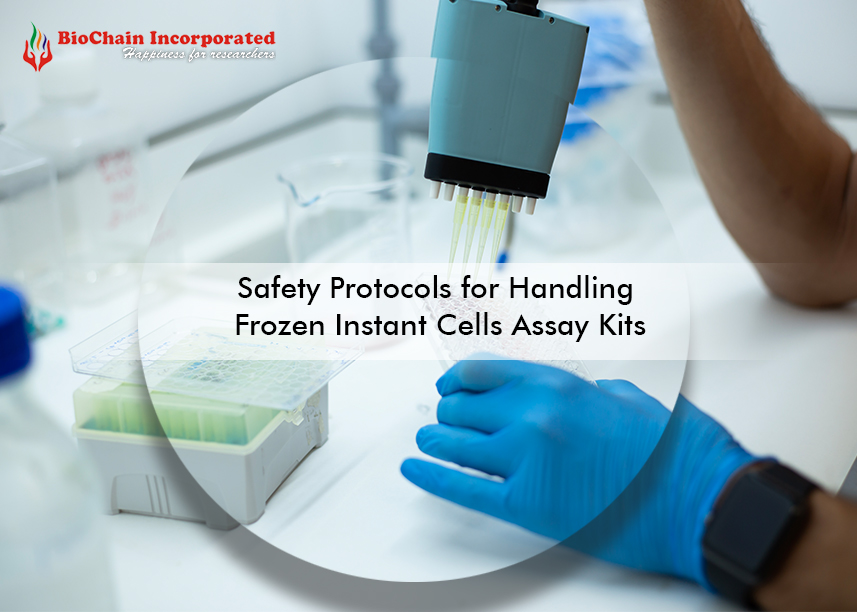Safety Protocols for Handling Frozen Instant Cells Assay Kits
The use of frozen rapid test kits in laboratories and research facilities requires careful attention to safety practices to ensure sample integrity, protect personnel and maintain the quality of results. Essential for various molecular biology and cell culture experiments, these kits contain sensitive reagents and biological materials that require proper handling and storage to prevent contamination, degradation or exposure to hazardous substances. Let's review some basic safety protocols for handling frozen cell rapid test kits:
1. Storage and handling:
Before handling frozen cell rapid test kits, make sure they are stored at the recommended temperature, usually below -20°C or according to the manufacturer's instructions. Proper storage conditions are critical to maintaining the stability and integrity of reagents and biological samples. Use proper freezer containers and labels to effectively organize and identify the Frozen Instant Cells Assay Kits.
2. Personal Protective Equipment (PPE):
Wear appropriate personal protective equipment, including lab coats, gloves, goggles, and face masks, when handling Frozen Instant Cells Assay Kits. Personal protective equipment helps protect against exposure to hazardous chemicals, biological agents, and potential spills or leaks. Ensure PPE is worn correctly and changed regularly to maintain effectiveness.
3. Thawing Procedures:
To ensure the integrity of frozen rapid test kits, follow the manufacturer's recommended thawing procedures. Thaw kits slowly and gently by placing them in the refrigerator or at room temperature, avoiding rapid thawing methods such as microwave ovens or water baths, which can degrade sample quality. Watch the melting progress carefully to avoid overheating or damaging sensitive parts.
4. Avoid Contamination:
Minimize the risk of contamination by maintaining a clean and sterile work environment when handling frozen rapid test kits. Use sterile instruments such as pipettes, tubes and tips and regularly disinfect work surfaces with appropriate cleaning agents. Avoid cross-contamination between samples by using separate tools and work areas for each batch.
5. Disposal of waste:
Dispose of the waste generated during the processing of frozen rapid analyzers according to the instructions and regulations of the institutions. Properly segregate hazardous materials, chemical waste, and recyclables to prevent environmental contamination and ensure compliance with safety standards. Use designated waste bins and follow established housekeeping practices.
6. Emergency Procedures:
Familiarize yourself with the emergency procedures and protocols used to deal with accidents, spills, or exposures with frozen rapid testers. Know the locations of safety showers, eyewash stations, fire extinguishers and first aid kits, and make sure employees are trained in first aid procedures. Report any accident or dangerous situation to the proper authorities immediately.
7. Training and Education:
Provide comprehensive training and education to personnel involved in the processing of frozen rapid test kits, including proper storage, handling, and disposal procedures, as well as safety precautions and emergency protocols. Regularly update training materials and conduct refresher courses to increase security awareness and adhere to best practices.
Conclusion
In summary, ensuring safety when handling Frozen Instant Cells Assay Kits is critical to protecting personnel, maintaining sample integrity, and obtaining reliable research results. Laboratories can create a safe and conducive work environment for conducting molecular biology and cell culture experiments by following established safety practices, including proper storage and handling, use of personal protective equipment, contamination prevention, responsible waste management, and emergency preparedness. Contact Biochain for quality Frozen Instant Cells Assay Kits. Contact now.



.png)

.png)


.png)
.png)
.png)
.png)
.png)